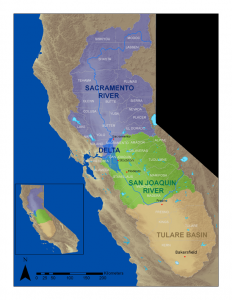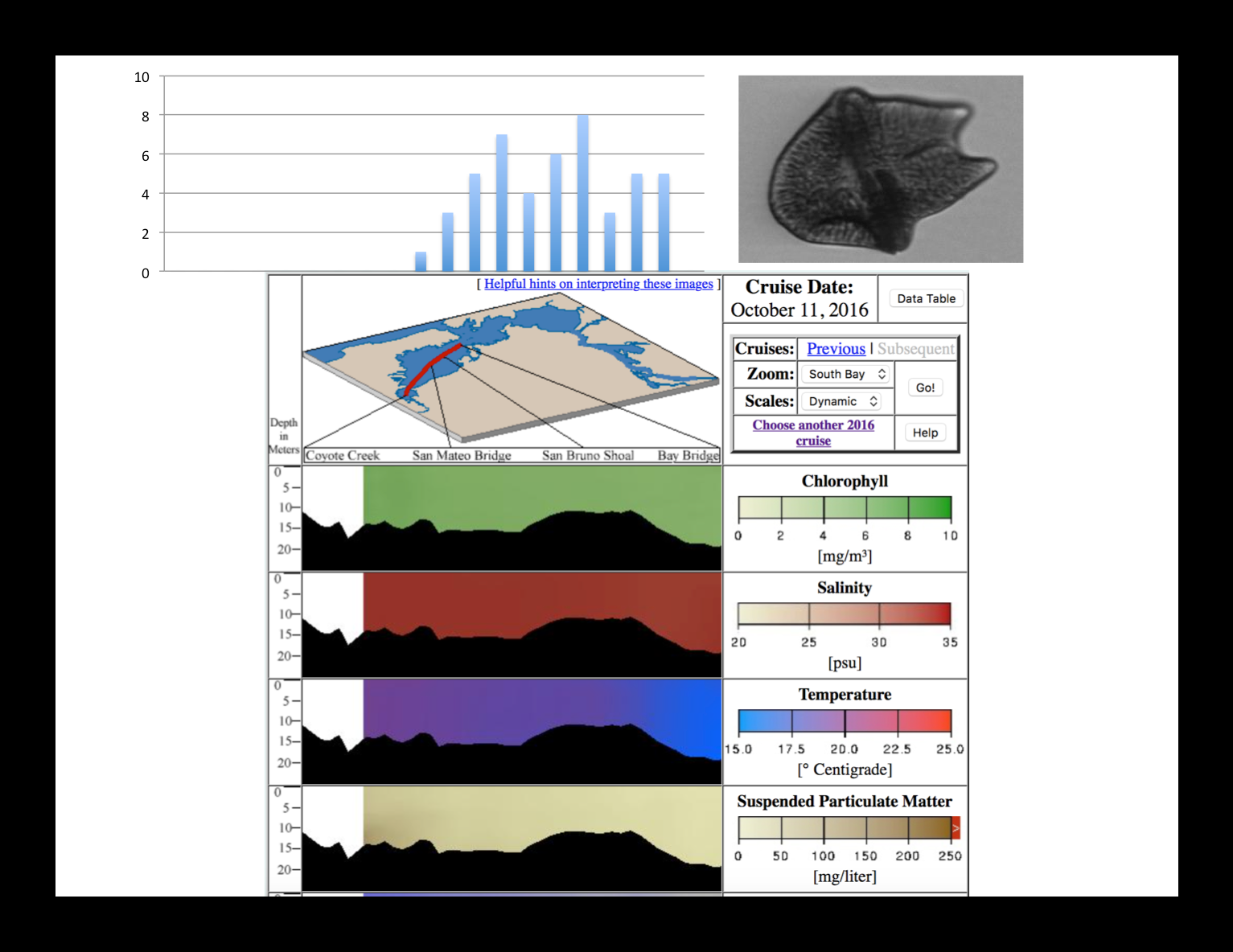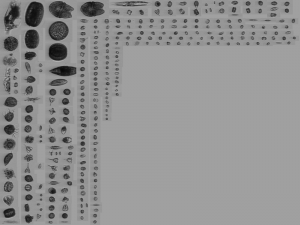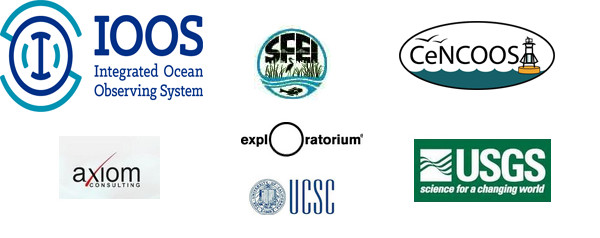San Francisco Bay has long been recognized as a nutrient-enriched estuary, but one that has exhibited resistance to some of the classic symptoms of nutrient over-enrichment, such as high phytoplankton biomass and low dissolved oxygen. However, recent observations suggest that the Bay’s resistance to high nutrient loads is weakening. The combination of high nutrient concentrations and changes in environmental factors that regulate the Bay’s response to nutrients has generated concern about whether the Bay is trending toward, or may already be experiencing, nutrient-related impairment.

The San Francisco Estuary includes the
drainage basins for the Sacramento and San
Joaquin rivers. (Click graphic for expanded view.)
To address growing concerns about San Francisco Bay’s changing response to nutrient loads, the San Francisco Bay Regional Water Quality Control Board worked collaboratively with the Bay Area Clean Water Agencies (BACWA) and other stakeholders to develop the SFB Nutrient Management Strategy, which calls for a range of activities to develop the scientific foundation for well-informed management decisions. An initial activity within the Nutrient Strategy was to develop a conceptual model for nutrient load-response in the Bay, and identify critical data and conceptual gaps. That draft report, developed with input from a group of regional scientists and funded by the SF Bay Regional Monitoring Program (RMP), was recently completed (Senn et al., 2013).
The conceptual model report made two broad recommendations: 1. Develop science plan(s) for SFB’s sub-embayments that targets the highest priority management and science questions; 2. Develop and implement an integrated program that combines observation/assessment, prediction of ecosystem response, and process-level studies that combined inform impairment assessment and decisions about how to best manage nutrients. Of relevance to the IOOS Ocean Technology Transition program, both recommendations call for analysis and continued development of a 40-year time-series that includes hydrographic parameters, nutrients, phytoplankton biomass and community composition, and occurrence of potentially harmful species.
The report recommended developing a moored sensor sub-program that complements an existing ship-based monitoring program by providing high temporal resolution data for a range of parameters (chl-a, DO, nutrients, turbidity) to i) identify the onset of events (e.g., large blooms); ii) improve understanding about the processes that influence phytoplankton blooms in order to predict future responses; iii) assess oxygen budgets; and iii) quantify nutrient fate.
The University of California Santa Cruz was awarded a three year grant by IOOS’ Ocean Technology Transition Project to incorporate consistent and cost-effective observations of Harmful Algae Bloom (HAB) and phytoplankton composition into the San Francisco Bay monitoring program to use as a metric to support ecosystem assessments. The project will integrate the Imaging Flow CytoBot (IFCB) into existing USGS R/V Polaris vessel transects, onto a planned mooring in the South San Francisco Bay, and on existing piers and/or fixed platforms monitoring to evaluate the potential to replace or augment phytoplankton enumeration (traditional microscopy) and HPLC pigment analysis to monitor phytoplankton composition and HABs in the San Francisco Bay.
Project Details
Planned activities are listed below by implementation year. Status updates will be added to this page as the project progresses.
Year 1 - $426,098 (September 2014 – August 2015):
- Purchase one of two IFCBs. This IFCB will be integrated into the existing R/V Polaris cruises as an underway system and used in the laboratory to directly compare discrete samples collected for microscopy and HPLC pigments. Update: The first IFCB was delivered in August 2015, and deployed in the Santa Cruz Wharf. Before its deployment, the IFCB was tested in the lab with samples from both the Santa Cruz Wharf and Pinto Lake, including comparing preserved samples (Lugol's preservative) using the IFCB and either Sedgewick-Rafter or Utermohl microscopy. Statistically there is no difference in counts of Pseudo-nitzschia using the IFCB versus microscopy.
Year 2 - $420,000 (September 2015 – August 2016):
- The second of two IFCBs will be purchased and integrated into the mooring program (Dumbarton Bridge and South Bay), with the original IFCB serving as a backup instrument so that the IFCBs can be swapped for maintenance. Update: The second IFCB was delivered in September 2016. Leveraging NOAA NCCOS Monitoring and Event Response for Harmful Algal Blooms (MERHAB) program funds, the IFCB was deployed on a United States Geological Survey (USGS) vessel on October 18, 2016 as part of MERHAB's Improving Tools for Monitoring Multiple HAB Toxins at the Land-Sea Interface in Coastal California' Project.
- Develop portable "self-contained" IFCB package. Update: Completed.
- Update: All IFCB data is publically available through the IFCB Dashboard temporary site at (http://128.114.25.124:8888/IFCB_lab/). This will be transitioned to CeNCOOS' website in the future.
- Update: The CeNCOOS outreach page on “Algal Blooms” was updated during this project year (Yr 2) with information and advice from project participants: http://www.cencoos.org/sections/classroom/algal_blooms.shtml
Year 3 (September 2016 – August 2017):
- Develop Algal Libraries. The IFCB has not been extensively operated on the west coast, but many of the phytoplankton species and groups observed at the MVCO (ifcb-data.whoi.edu) and Texas observatories are also present in the SFB, simplifying development of algal libraries. Much of the first year of the project will be needed to develop region-specific libraries for SFB, using the microscopy and culture data for validation and testing. Update: UCSC has successfully ported the Texas A&M Library to California, and also recently developed an Akashiwo sanguinea library from the on-going red-tide.
- Add HABS to IFCB Image Library. There are multiple components to the data management/sharing plan for this project. The first, which entails the collection, storage, and sharing, of the "complete" IFCB data collected will be handled through the instrument software and Sosik's automated analysis software. This part will be carried out by UCSC, where the server to handle these data will reside, and the result will include a library of visual images. A publically accessible dashboard to view and access these data will be linked to the CeNCOOS website. Update: All IFCB data is publically available through the IFCB Dashboard temporary site at (http://128.114.25.124:8888/IFCB_lab/).
- Continue routine deployments of IFCBs. Update: The Second IFCB will be deployed at the San Francisco Exploratorium between USGS Cruises.
- Deliver Technical Report.
Societal Benefits:
The PIs were able to use the IFCB on USGS cruises and at the Santa Cruz Wharf to document an Akashiwo bloom in the coastal ocean. These data were used to inform several management groups and the public (via news reports) about the presence, cell density, and potential impact of the bloom event. The image below shows an example of the data, processed using the automated classifier, for the San Francisco Bay.

The IFCB detected an Akashiwo bloom in SF Bay in September 2016, and successfully classified it using the automated classifier. The upper plot shows cell
density along the cruise track. The lower plots show the ancillary cruise data. The data were used by several management groups in response to the bloom.
For more information about this project contact Dr. Raphael Kudela.
For more information about IOOS’ Ocean Technology Transition Project, please contact Tiffany Vance, Project Manager.
Additional Resources:
San Francisco Estuary Institute
USGS San Francisco Water Quality
Gulf Coast HAB Time-Series
 Official websites use .gov
A .gov website belongs to an official government organization in the United States.
Official websites use .gov
A .gov website belongs to an official government organization in the United States.
 Secure .gov websites use HTTPS
A lock or https:// means you’ve safely connected to the .gov website. Share sensitive information only on official, secure websites.
Secure .gov websites use HTTPS
A lock or https:// means you’ve safely connected to the .gov website. Share sensitive information only on official, secure websites.


